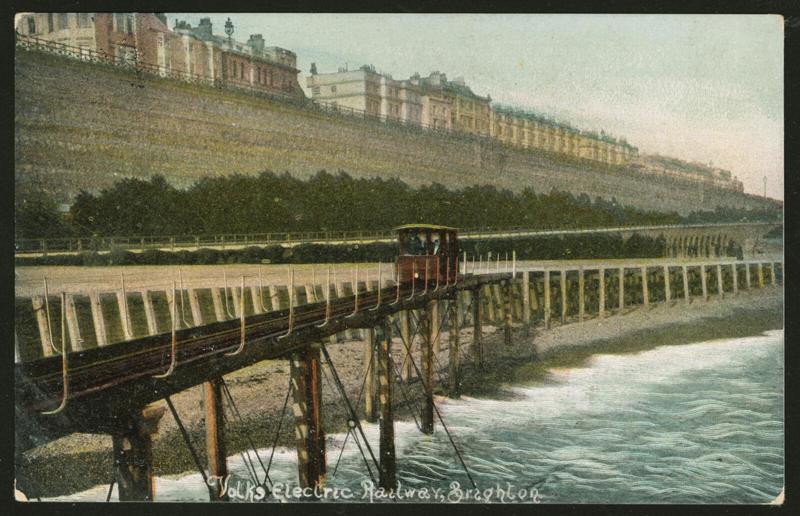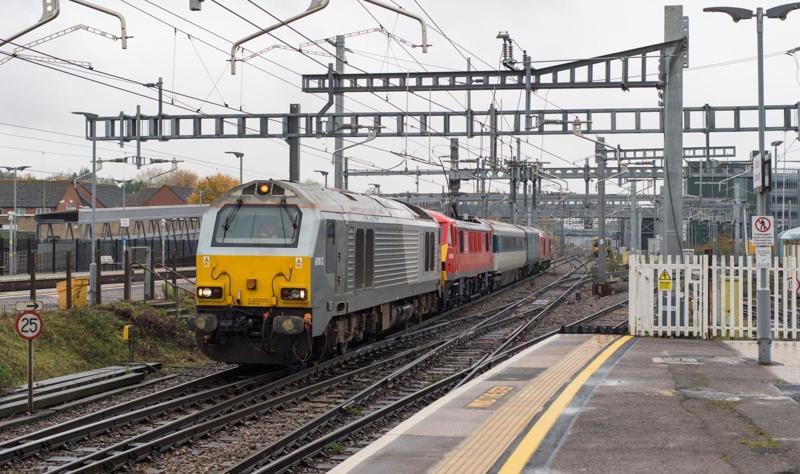As part of this year’s Railway 200 celebrations, over the course of the next few months RAIL will be running a series of extracts from Bradley’s Railway Guide: A Journey Through Two Centuries of British Railway History 1825-2025, courtesy of Profile Books. Each extract will be accompanied by a look at how the topic has evolved over the past 200 years. In this issue, we start with an early electrification pioneer…
The past: 1883
As part of this year’s Railway 200 celebrations, over the course of the next few months RAIL will be running a series of extracts from Bradley’s Railway Guide: A Journey Through Two Centuries of British Railway History 1825-2025, courtesy of Profile Books. Each extract will be accompanied by a look at how the topic has evolved over the past 200 years. In this issue, we start with an early electrification pioneer…
The past: 1883

Britain’s first permanent public railway powered by electricity opened in Brighton on 4 August 1883.
The creation of the engineer Magnus Volk (1851-1937), it really had two incarnations: the first, only a quarter of a mile long and lightly built to a gauge of 2ft; the second, opened the following year, extending for over a mile and reconstructed to the unusual gauge of 2ft 8½in.
There was no public electricity supply at this date, so Volk provided his railway with its own Siemens generators, using gas engines to power them. Now in council ownership, the line remains in use.
The founder’s name may suggest a Nordic or Germanic background, but Volk was Brighton-born and very much a local figure. Apprenticed to a scientific instrument maker, he abandoned his training after the death of his German father in order to help run the family clock-making business.
In the 1870s Volk began producing telegraphic equipment, and in 1880 he installed electric lighting at home, also with a Siemens generator and gas engine for power. A contract followed to install electric light at Brighton Pavilion in 1882-83.
After the success of his new railway, Volk made fresh ventures into electric transport - a battery-powered passenger carriage, and a share in a project to run electrically powered launches on the River Thames - only to file for bankruptcy in 1889.
In the 1890s he bounced back with the Brighton & Rottingdean Seashore Electric Railway, one of the most bizarre public conveyances ever conceived.
This extended for three miles beyond the eastern terminus of the existing railway, taking a route along the beach between the high and low tideline.
Passengers travelled in a decked contraption rather like a small seaside pier pavilion, which was raised up on four cross-braced legs to keep clear of the sea when the tide was in.
Each leg ended in a four-wheeled bogie, of the same 2ft 8½in gauge as the railway on dry land, which ran on parallel tracks placed 18ft apart and anchored to the bedrock.
One bogie on each track was powered by an electrically driven shaft, drawing current supplied by a wire suspended from poles alongside the track. Passenger access was by lightly constructed jetties, one at each end of the line.
This unique railway began operation in November 1897. Less than a week later, a strong storm caused substantial damage to the line and the vehicle was knocked over by heavy seas.
Repairs ensued, and the unlikely conveyance - advertised as ‘a sea voyage on wheels’ - resumed its journeys back and forth along the beach.
Closure came in 1901, after Brighton Corporation claimed part of the route to build some new beach defences.
Volk’s marine electric railway may be long gone, but its terrestrial predecessor endures, with some variations from its 19th-century route. The Edwardian postcard shows part of its eastern extension, made after the sea railway closed and since reconstructed to run at beach level.
Curiously, the two railways between them included the key components of the familiar electric street tramway, of which the first British example with an overhead power supply began running in Leeds in 1891.
If Volk had turned his attention to trams, rather than carriages, river boats and beach railways, what might he have achieved?
■ Reproduced with permission from Bradley’s Railway Guide: A Journey Through Two Centuries of British Railway History 1825-2025, by Simon Bradley (Profile Books, £30, profilebooks.com).

The present
Richard Foster brings the subject of rail electrification up-to-date.

The relationship between railways and electrification in Britain has never been a smooth one.
Michael Holroyd Smith and Charles Grey Mott were inspired by what Volk and Ernst Werner Siemens had done.
Consequently, Blackpool gained an electric tramway, and electricity fixed the problem of how to haul trains in the City & South London Railway’s deep tunnels.
As a result of their work, electricity is the go-to motive power in the world of light rail and metro.
Sadly, the same cannot be said for the main line. It’s common knowledge that an electrically powered rail vehicle is the ‘greenest’ form of public transport currently available. Yet even when faced with a climate emergency, the disjointed approach to rail electrification in this country continues.
Lines in South Wales are being electrified to create a metro system, yet the billion-pound restoration of the Oxford to Bletchley line will be worked by diesel trains.
The Transpennine Route Upgrade is lauded as a “transformative” programme that will “improve connectivity in the North”, but only short sections of line between York and Manchester will be electrified.
And freight operators are still campaigning for railways into key terminals to be electrified in order to decarbonise the sector.
This lack of co-ordination dates back to the turn of the 20th century, when Britain’s railways were operated by a host of small companies, all doing things their own way.
The North Eastern Railway was an early adopter of electric power, electrifying lines with 660V DC third-rail around Tyneside to combat competition from trams.
Then, in 1915, electrically-hauled coal trains began running on parts of the former Stockton & Darlington Railway, using the 1,500V DC overhead catenary.
Sadly, the decline in coal traffic in the 1930s led the LNER (the NER’s successor) to scrap the electrified system, and trains on Britain’s pioneering stretch of railway were steam-hauled once again.
The biggest barrier to rail electrification is that we just don’t do enough of it.
The post-war period through to the early 1960s was boom time for electrification. A trans-Pennine electrified railway appeared in just four years (the Manchester-Sheffield-Wath electric railway, 1952-55), and that included digging new tunnels!
It too used the 1,500V DC overhead system (adopted as a British standard in 1921 but rarely enforced), which also appeared in Essex.
Lines around Glasgow were electrified, while the Southern Region continued to expand its third-rail 750V DC network, even into Kent.
But once BR’s flagship project - the West Coast Main Line (using the now-standard 25kV overhead system) - was finally completed in 1974 (14 years after it started), we stopped electrifying… until the East Coast Main Line in the late 1980s.
The ECML is regularly lambasted for being done cheaply, and is thus prone to failure.
Not wishing to repeat those issues, the Great Western Main Line project (started some 20 years later) went the other way. Its complexity became a lesson in how not to do things.
We should recognise that electrification isn’t easy. Britain’s railways were not designed with overhead wires in mind. But do we need wires?
The climate emergency has pushed advances in battery technology. Maybe the electrically powered railway of the future will be more like the one being built in Fife. Scotland’s Railway is using overhead wires (where it can) around the Fife Circle, where they will charge batteries.
And, as was shown in RAIL 1026, Great Western Railway’s rapid charging technology offers the potential for an electric future without those costly wires.
Login to continue reading
Or register with RAIL to keep up-to-date with the latest news, insight and opinion.


















Login to comment
Comments
No comments have been made yet.